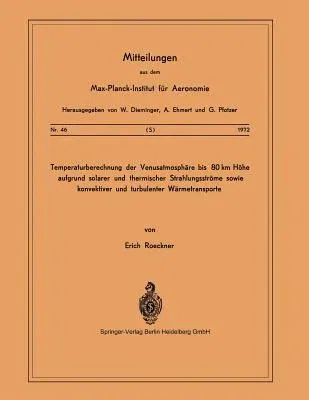E Roeckner
(Author)Temperaturberechnung Der Venusatmosphäre Bis 80 Km Höhe Aufgrund Solarer Und Thermischer Strahlungsströme Sowie Konvektiver Und Turbulenter WärmetransPaperback, 24 February 1972

Qty
1
Turbo
Ships in 2 - 3 days
In Stock
Free Delivery
Cash on Delivery
15 Days
Free Returns
Secure Checkout
Part of Series
Mitteilungen Aus Dem Max-Planck-Institut Für Aeronomie
Part of Series
Mitteilungen Aus Dem Max-Planck-Institut Fa1/4r Aeronomie
Part of Series
Mitteilungen Aus Dem Max-Planck-Institut Fur Aeronomie
Print Length
58 pages
Language
German
Publisher
Springer
Date Published
24 Feb 1972
ISBN-10
3540057765
ISBN-13
9783540057765
Description
Product Details
Author:
Book Format:
Paperback
Country of Origin:
US
Date Published:
24 February 1972
Dimensions:
27.94 x
21.59 x
0.33 cm
ISBN-10:
3540057765
ISBN-13:
9783540057765
Language:
German
Location:
Berlin, Heidelberg
Pages:
58
Publisher:
Series:
Weight:
172.36 gm

